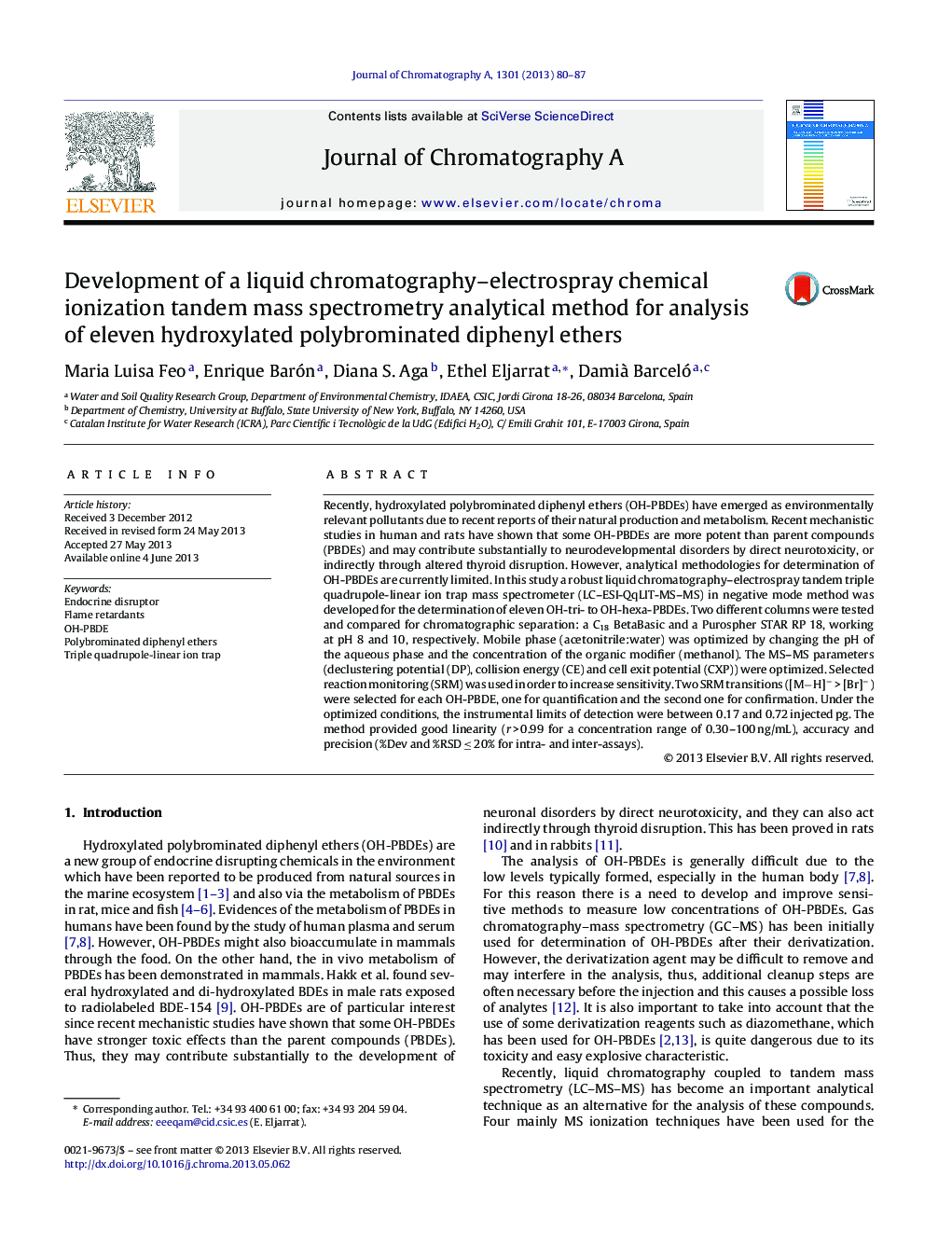| کد مقاله | کد نشریه | سال انتشار | مقاله انگلیسی | نسخه تمام متن |
|---|---|---|---|---|
| 1200812 | 1493625 | 2013 | 8 صفحه PDF | دانلود رایگان |

• A methodology for the analysis of OH-tri- to OH-hexa-PBDEs by LC–QqLIT-MS was developed.
• Baseline chromatographic separation of the analytes was obtained using a STAR RP-18 column and at pH = 10.
• Instrumental LODs were between 0.10 and 3.85 injected pg.
• We propose a strategy for the analysis of OH-PBDEs without the derivatization step.
Recently, hydroxylated polybrominated diphenyl ethers (OH-PBDEs) have emerged as environmentally relevant pollutants due to recent reports of their natural production and metabolism. Recent mechanistic studies in human and rats have shown that some OH-PBDEs are more potent than parent compounds (PBDEs) and may contribute substantially to neurodevelopmental disorders by direct neurotoxicity, or indirectly through altered thyroid disruption. However, analytical methodologies for determination of OH-PBDEs are currently limited. In this study a robust liquid chromatography–electrospray tandem triple quadrupole-linear ion trap mass spectrometer (LC–ESI-QqLIT-MS–MS) in negative mode method was developed for the determination of eleven OH-tri- to OH-hexa-PBDEs. Two different columns were tested and compared for chromatographic separation: a C18 BetaBasic and a Purospher STAR RP 18, working at pH 8 and 10, respectively. Mobile phase (acetonitrile:water) was optimized by changing the pH of the aqueous phase and the concentration of the organic modifier (methanol). The MS–MS parameters (declustering potential (DP), collision energy (CE) and cell exit potential (CXP)) were optimized. Selected reaction monitoring (SRM) was used in order to increase sensitivity. Two SRM transitions ([M−H]− > [Br]−) were selected for each OH-PBDE, one for quantification and the second one for confirmation. Under the optimized conditions, the instrumental limits of detection were between 0.17 and 0.72 injected pg. The method provided good linearity (r > 0.99 for a concentration range of 0.30–100 ng/mL), accuracy and precision (%Dev and %RSD ≤ 20% for intra- and inter-assays).
Journal: Journal of Chromatography A - Volume 1301, 2 August 2013, Pages 80–87